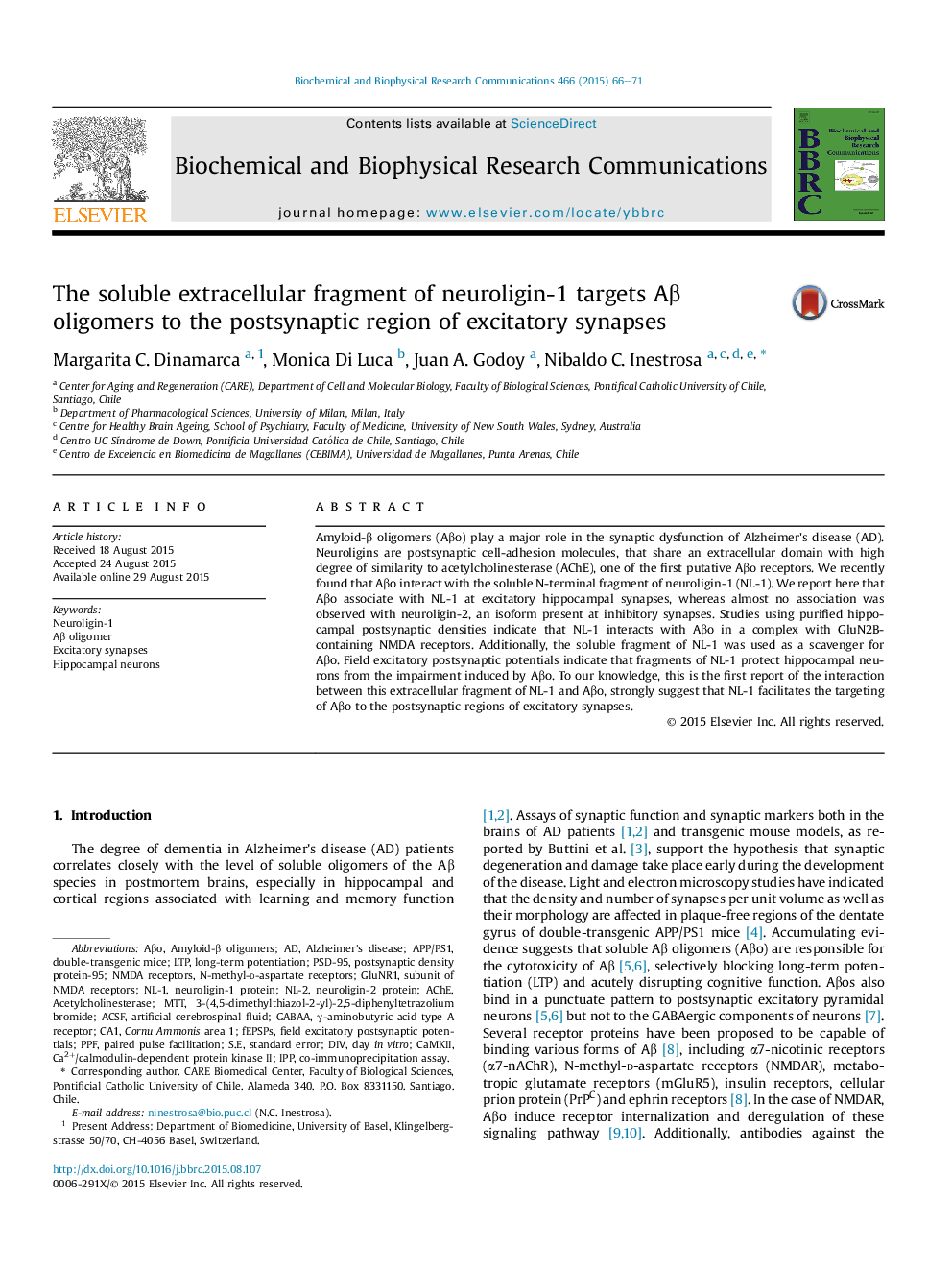| Article ID | Journal | Published Year | Pages | File Type |
|---|---|---|---|---|
| 10749528 | Biochemical and Biophysical Research Communications | 2015 | 6 Pages |
Abstract
Amyloid-β oligomers (Aβo) play a major role in the synaptic dysfunction of Alzheimer's disease (AD). Neuroligins are postsynaptic cell-adhesion molecules, that share an extracellular domain with high degree of similarity to acetylcholinesterase (AChE), one of the first putative Aβo receptors. We recently found that Aβo interact with the soluble N-terminal fragment of neuroligin-1 (NL-1). We report here that Aβo associate with NL-1 at excitatory hippocampal synapses, whereas almost no association was observed with neuroligin-2, an isoform present at inhibitory synapses. Studies using purified hippocampal postsynaptic densities indicate that NL-1 interacts with Aβo in a complex with GluN2B-containing NMDA receptors. Additionally, the soluble fragment of NL-1 was used as a scavenger for Aβo. Field excitatory postsynaptic potentials indicate that fragments of NL-1 protect hippocampal neurons from the impairment induced by Aβo. To our knowledge, this is the first report of the interaction between this extracellular fragment of NL-1 and Aβo, strongly suggest that NL-1 facilitates the targeting of Aβo to the postsynaptic regions of excitatory synapses.
Keywords
PPFAβ oligomerPSD-95aCSFCaMKIIIPPCA13-(4,5-dimethylthiazol-2-yl)-2,5-diphenyltetrazolium bromideAPP/PS1Ca2+/calmodulin-dependent protein kinase IIfEPSPsMTTγ-aminobutyric acid type A receptorcornu ammonis area 1AChEAcetylcholinesteraseAmyloid-β oligomersAlzheimer's diseasepaired pulse facilitationlong-term potentiationLTPstandard errorAβoDIVexcitatory synapsesartificial cerebrospinal fluidHippocampal neuronsfield excitatory postsynaptic potentialspostsynaptic density protein-95GABAANMDA receptorsN-Methyl-d-aspartate receptors
Related Topics
Life Sciences
Biochemistry, Genetics and Molecular Biology
Biochemistry
Authors
Margarita C. Dinamarca, Monica Di Luca, Juan A. Godoy, Nibaldo C. Inestrosa,
